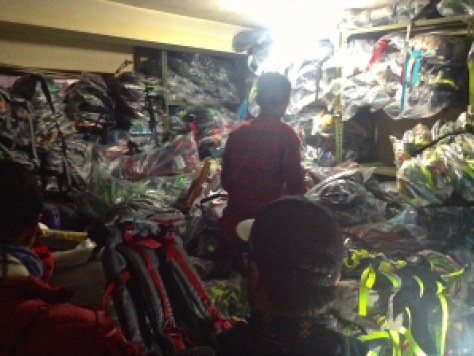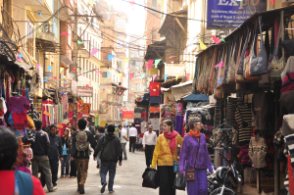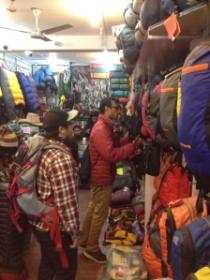TANGALLE, SRI LANKA
In Sri Lanka, January marks the high season for tourism. Running from the winters of the north or capitalizing on summer breaks in the south, visitors flock to Sri Lanka for the holidays. For the better part of December, January and Febuary most hotels on the south shore of the island are fully booked. Paolo knows this.
 As the owner of Eva Lanka hotel on the Tangalle coast, he relies on the winter months to make up for the empty rooms of summer. Each year guests return and new ones flood in for Christmas and New Years celebrations. Yet, each year Paolo’s personal beach for surfing has remained untouched by the influx of tourists.
As the owner of Eva Lanka hotel on the Tangalle coast, he relies on the winter months to make up for the empty rooms of summer. Each year guests return and new ones flood in for Christmas and New Years celebrations. Yet, each year Paolo’s personal beach for surfing has remained untouched by the influx of tourists.
In the offseason Paolo’s duties of managing client services decrease and he has more time to perfect his art. Each morning at 7 AM Paolo straps his board to his scooter and rides fifteen minutes to a neighboring beach. After an hour and a few good waves he’ll return for breakfast and begin the day.

For years his small bay was occupied by a lone fisherman and occasionally graced by the local high school track team practicing their sprints. Even in the high season the beach was immune to tourism due to its remoteness. Little changed when an Australian and several other surfers joined Paolo for morning sessions. After years of teaching himself the sport in the hidden bay, Paolo had become a seasoned surfer and a familiar face with the locals who frequented the beach.
All of this changed in 2014 when the Australian saw an opportunity to capitalize on what they found. During the low season summer months he began building a small hotel and beach bar. With no more than four rooms it posed little threat to the serenity of the bay.
 Observing the Australian investing in the beach inspired the regular fisherman to do the same. Overnight the fisherman summed his savings and began building a ‘bed & beach bar’ next door. Though he started after the Australian, they both finished in late October – just in time for the high season. Each location had ‘tourist’ prices and an impressive amount of beach furniture.
Observing the Australian investing in the beach inspired the regular fisherman to do the same. Overnight the fisherman summed his savings and began building a ‘bed & beach bar’ next door. Though he started after the Australian, they both finished in late October – just in time for the high season. Each location had ‘tourist’ prices and an impressive amount of beach furniture.
In the two months between opening and New Years Day the number beach visitors ballooned in size. Now the sound of waves can barely be heard over the deafening dance music booming from the fisherman’s concert grade speakers. Trees lean over over to shade young guests in bathing suits while white foreigners littere the beach reading, swimming and surfing.

Teams of Sri Lankan youths can be found lurking nearby, ready to sell trinkets to unweary tourists. Cars, bikes and bajaji’s are crammed into the car park just a few meters from the sand. In the shallows children with inflatable tubes play and novice surfers use the hotel’s foam boards. Deeper out a surf school has claimed a patch of water. Next to them several bikini clad paddle boarders hog the bigger breakers. Interspersed in the mess are dozens of surfers all waiting, trying to catch the same wave.
Paolo sits on the beach sharing his overpriced Lion beer with me. He sees his hotel guests that he referred to his personal beach. As he eyes the family enjoying themselves he notes that they will probably stay here instead of his place next time. As more people hear about Paolo’s beach he loses guests and surfing real estate.

As we sit there the older Aussie walks past us, board in hand, still wet from surfing. “Remember the old days?” he jokes. Paolo laughs, remembering the days when he didn’t have to be mindful of who was in front of him on the wave. Though he never lets on, Paolo thinks to himself that the Australian is the main culprit.
Less than a decade ago Sri Lanka was in a civil war and its tourism industry suffered heavy losses because of it. The island was also devastated by the 2004 Indian Ocean earthquake and is still recovering. But today the current revival has provided the hotels in the Tangalle area with more visitors than they can handle. As a first time visitor it is hard to believe that there was a time when the beach was not overflowing with tourists.
It is a blessing and curse. With each additional guest that visits his hotel, his beach floats farther from its pristine state. But the summer will attract fewer visitors, and with it a glimpse of Paolo’s old beach.
 Rourke Healey is a senior Diplomacy and World Affairs major at Occidental College. He recently returned from conducting research on middle class consumerism in Dar es Salaam, Tanzania. He has also recently completed work with a microfinance group in Kathmandu, Nepal and visited Tangalle, Sri Lanka to cover presidential election.
Rourke Healey is a senior Diplomacy and World Affairs major at Occidental College. He recently returned from conducting research on middle class consumerism in Dar es Salaam, Tanzania. He has also recently completed work with a microfinance group in Kathmandu, Nepal and visited Tangalle, Sri Lanka to cover presidential election.





 Rourke Healey is a senior Diplomacy and World Affairs major at Occidental College. He recently returned from conducting research on middle class consumerism in Dar es Salaam, Tanzania. He has also recently completed work with a microfinance group in Kathmandu, Nepal and visited Tangalle, Sri Lanka to cover presidential election.
Rourke Healey is a senior Diplomacy and World Affairs major at Occidental College. He recently returned from conducting research on middle class consumerism in Dar es Salaam, Tanzania. He has also recently completed work with a microfinance group in Kathmandu, Nepal and visited Tangalle, Sri Lanka to cover presidential election.